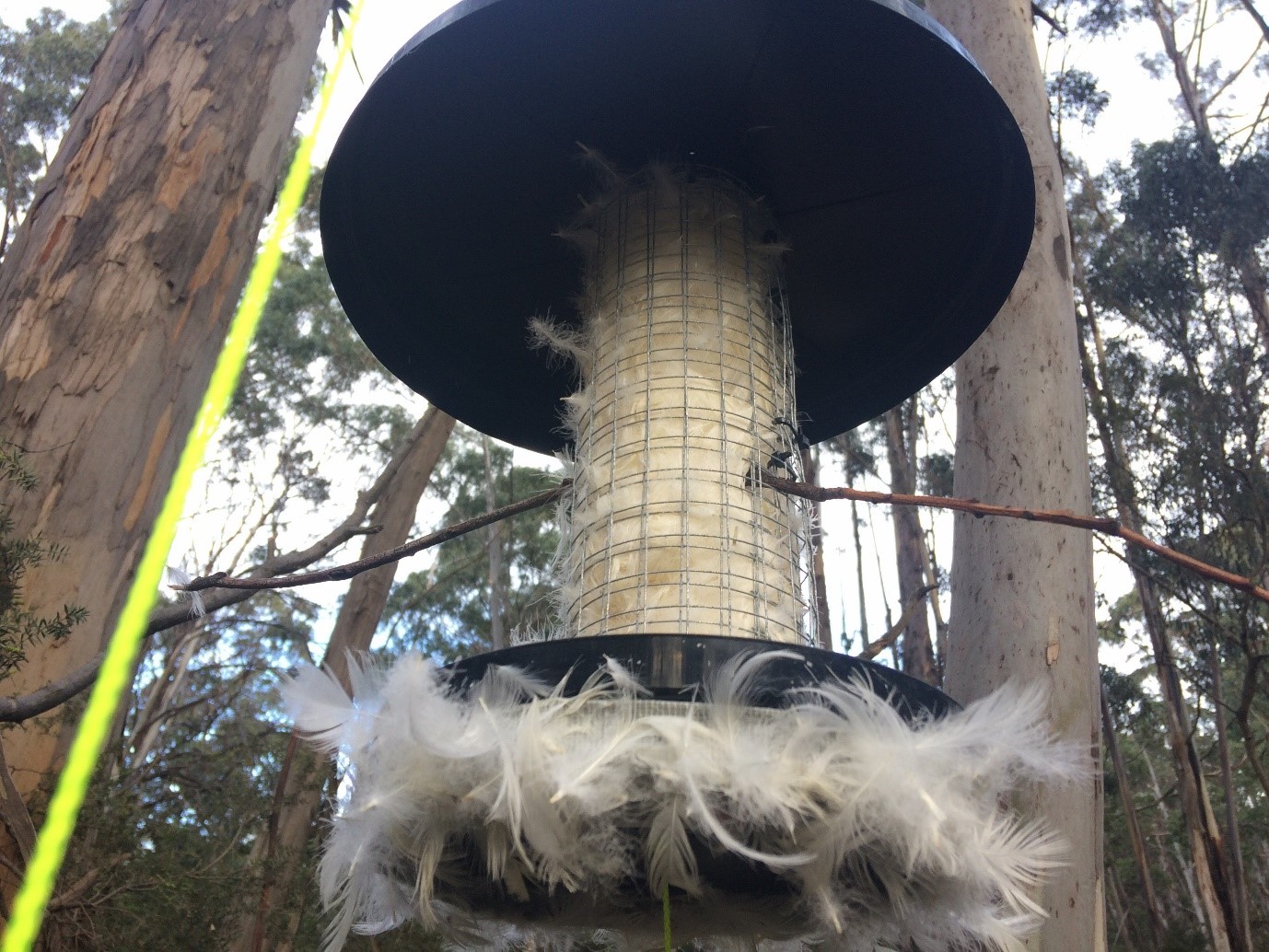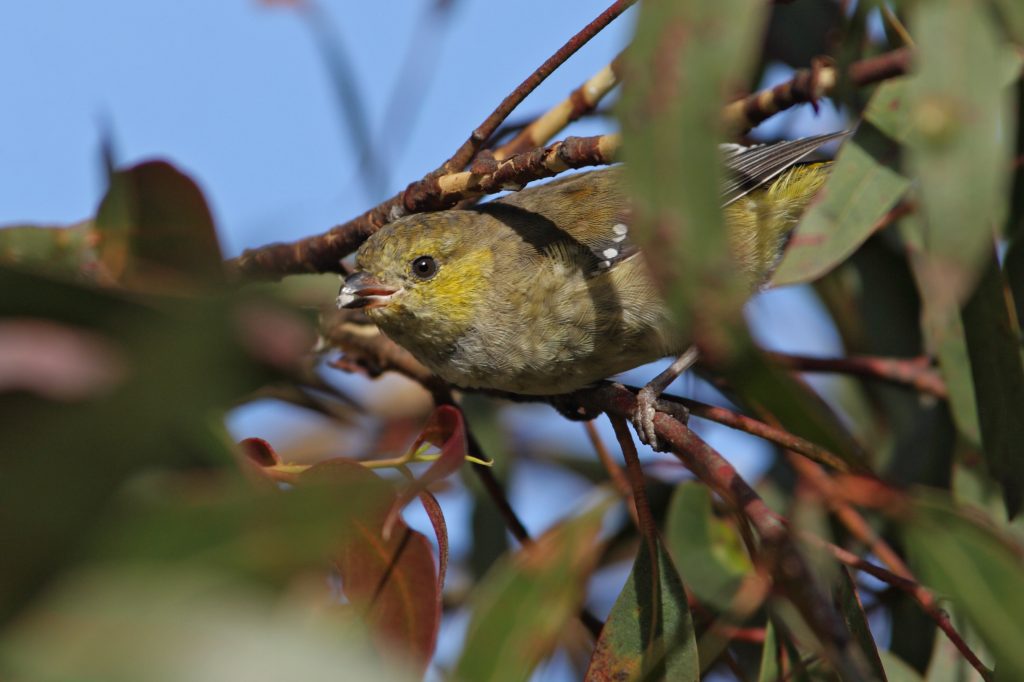The Forty-spotted Pardalote is one of Australia’s rarest birds. It’s only found in south-east Tasmania in areas dominated by stands of white gum. While they are primarily under threat from habitat and competition, another challenge that this little bird is facing is in the nest – where the larvae of the parasitic flies can wipe out nestlings.
NRM South has started work with researchers Fernanda Alves and Dejan Stojanovic from The Australian National University on a project to find out more about how we can improve their chances of survival.
The study, which is being carried out on north Bruny Island, is testing the effectiveness of specially designed ‘feather dispensers’ that have been treated with a bird-safe commercial insecticide. Researchers will assess the relative abundance of Forty-spotted Pardalotes in areas where insecticide-treated feather dispensers are present, compared to areas where they are not.
 Now that the experimental sites have been established, researchers will be visiting the sites periodically over the next few months to check on and maintain the feather dispensers and carry out population surveys (which will be compared against a baseline survey that was carried out in winter 2021). Previous research has confirmed that Forty-spotted Pardalotes that use fumigated feathers in their nests have improved nestling survival rates, so it is expected that there will be more fledglings and higher pardalote density at treatment sites.
Now that the experimental sites have been established, researchers will be visiting the sites periodically over the next few months to check on and maintain the feather dispensers and carry out population surveys (which will be compared against a baseline survey that was carried out in winter 2021). Previous research has confirmed that Forty-spotted Pardalotes that use fumigated feathers in their nests have improved nestling survival rates, so it is expected that there will be more fledglings and higher pardalote density at treatment sites.
This project is supported by NRM South through funding from the Australian Government’s National Landcare Program.
